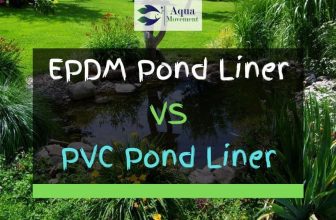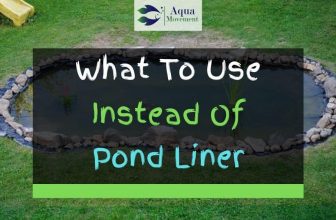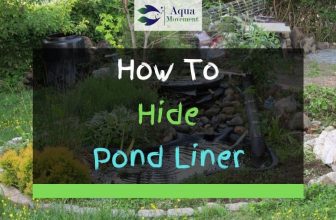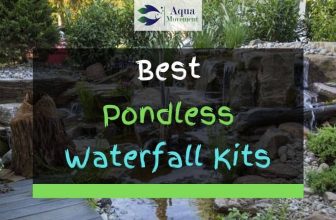15 Best Plants For Your Pond Reviewed
Ponds should be a rich and immersive environment, full of color and vitality. This is best both for you as the observer and proud owner, but also for the fish and other aquatic creatures in your pond.
It is crucial to try and replicate their native environment as best as possible, to set them at ease and allow them to display their natural behaviors. But it is equally important to make sure that your pond is well filtered (naturally or artificially) and aesthetically pleasing.
After all, a pond should be a real centerpiece for your space.
Thankfully, the best pond plants allow you to achieve all these functions. Aquatic plants help to keep your pond hale and healthy in a number of ways.
Firstly, they provide ideal breeding spots for the beneficial bacteria that help to propel the nitrogen cycle and breakdown the waste from your fish. Also, aquatic plants help to aerate the water and act as a vital source of dissolved oxygen which fish depend on to survive.
Aquatic plants can also help to prevent the growth of unsightly algae by competing for resources with them, and finally they can be a tasty snack for some turtles or smaller fish.
The benefits of the best pond plants really cannot be overstated!
[amazon table=”10569″]
Table of Contents
15 of the Best Pond Plants
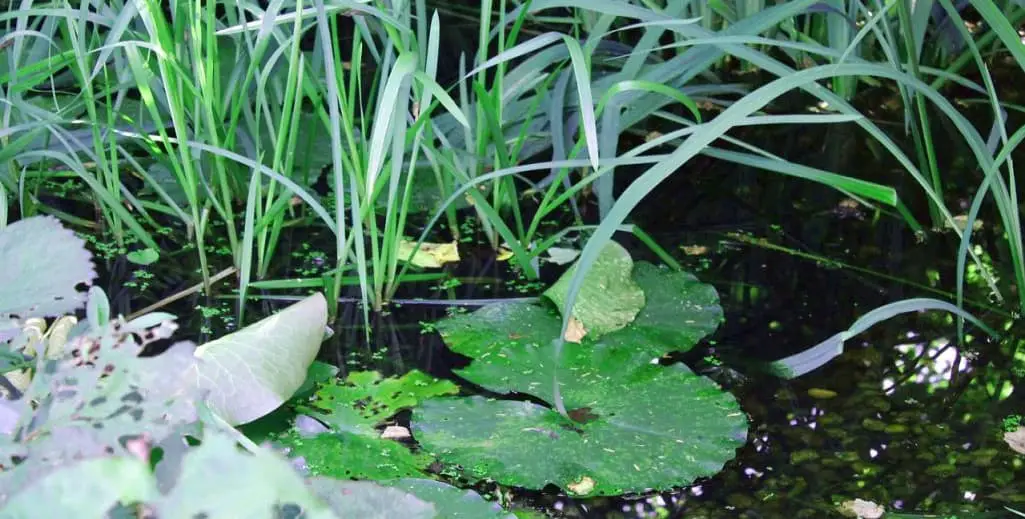
Creeping Jenny
[amazon box=”B07LGV6P49″]
Creeping Jenny is a plant that is native to Europe, but which also thrives in North America. It is also known by the common name moneywort or twopenny grass.
It is a very attractive perennial plant, which acquires special appeal during the summer thanks to its pale-yellow flowers.
For the rest of the year it consists of sprightly green leaves which like to grow on the corner of rock formations, and can add a real touch of class to any pond.
Check Price and Reviews on Amazon
Video: “Aquarium Plants: Creeping Jenny”
Water Lilies
[amazon box=”B07BZS8DGQ”]
Water lilies are probably the one plant that is most associated with small, domestic ponds. They have really great appeal, acting as a place for wildlife such as insects, frogs, and butterflies to congregate.
Drifting silently across the surface of the pond they can add a real sense of peace and serenity to your pond. Some breeds of water lilies are quite hardy plants, while others will only survive in near tropical climates under careful attention.
They also range greatly in size, from 2 inches to a few feet in diameter. When in bloom their flowers can be absolutely stunning, and bloom in a spectrum of vivid colors from blues to pink.
Check Price and Reviews on Amazon
Video: “5 Tips for Water Lilies: How to Place Them in a Pond”
Pickerel Blue
[amazon box=”B07KYC5C2M”]
Pickerel pond plants are available in a range of breeds and colors, but the pickerel blue type is probably the most popular. It is a very attractive plant, growing to between 24 and 30 inches in size, with a minimum amount of experience or attention required.
It has lovely heart shaped leaves and, in the color, the bright blue of the flower is bound to attract attention from some of the pollinators in your garden.
Pickerel Blue can create an especially impressive spectacle when it is planted in abundance.
Check Price and Reviews on Amazon
Video: “Blue Pickerel Plant Pontederia cordata”
Corkscrew Rush
[amazon box=”B01DQYCWL6″]
The corkscrew rush is not as well known for its flower. Its flower is rare and unspectacular, but the shape and color of this plant can still make it an interesting addition to any pond.
When young the leaves of this plant are green and tightly coiled, although the distinctive coils loosen with age and the color fades to a yellow.
Rushes can grow to about 45 cm in length. It is also a perennial plant and requires 5-10 cm of permanent water for best growth, which makes it a perfect plant for the boundary zone of your pond.
Check Price and Reviews on Amazon
Video: “Time Lapse of Spiral/Corkscrew Rush Grass Growing”
Hornwort
[amazon box=”B00V31HHVA”]
This is an extremely widespread plant which has the distinction of being native to all continents except Antarctica. It appears as a large green bush, but in fact it consists of one long green central stem and numerous side shoots.
Hornwort can grow to lengths of 1 to 3 meters if allowed, and is the ideal water plant for both aquariums and ponds.
It is a floating plant, not requiring roots, though it may attach itself to the substrate or to rocks and can provide good cover either for newly hatched fish or small shrimp fry.
Check Price and Reviews on Amazon
Video: “Underwater Forest of Horn Wort for Your Pond”
Water Hyacinths
[amazon box=”B071LKCY9J”]
The common water hyacinth is another free-floating form of aquatic plant which could really enliven your pond and help transform it to the aquatic paradise you have always envisaged.
Water Hyacinths is a native of the Amazon basin, and is considered a quick growing invasive species in many other parts of the world. The base consists of a free-floating bulb supporting fresh, curvaceous green leaves and the flower is often a real sight to behold.
These plants can reach up to a meter above the surface of the water, so they are best reserved for the largest of ponds.
Check Price and Reviews on Amazon
Video: “FASTEST growing pond plant- Water hyacinth”
Water Lettuce
[amazon box=”B012CGJT5Q”]
The reason for the quirky name of this common aquatic plant is very simple; the plant leaves resemble floating heads of lettuce. This plant produces a rosette of lush green leaves on a floating base.
They can grow to relatively large sizes of 30-40 cm. They are a quickly populating plant, often blooming during the warm summer weather.
They are also ideal for beginners to the world of aquatic horticulture, as they are quite easy to establish and take care of in your pond.
Check Price and Reviews on Amazon
Video: “Water Lettuce Explosion in Backyard Pond! 61 Days”
Water Mint
[amazon box=”B06ZZPNG2H”]
Like the previous example, this plant is also named as the aquatic version of a common plant. It is a rooted plant which will do well in most locations, as it is found in its natural environment all over Europe, Africa and in parts of Southwest Asia.
Water Mint usually does best in shallow water environments, such as on the edges of streams, ponds or boggy patches of ground. The flower will grow above the surface of the water, and the flower consists of dense purple or lilac colored fibers.
Flowering occurs in mid to late summer. and the reason for its name will become obvious if you get one. The plant smells distinctively minty and fresh.
Check Price and Reviews on Amazon
Video: “Water mint: another aromatic wild edible”
Pitcher Plants
[amazon box=”B00Q8Q6QPS”]
These are clever, carnivorous beasts which will add a real eye-catching feature to any pond. You can amaze your friends by having one of these famed plants around your simple home pond.
There are a few different types of pitcher plants but usually they have some common features.
They have tall, tubular stems and bright colors to attract unwitting flies and insects. Then the waxy surfaces and fibers on the inside of the pitcher trap these insects and they fall into the bellows of the plants, where they are digested to nourish the growing plant.
Most of these plants will grow only in warm locations under direct sunlight, and will thrive best if stood in about 2 cm of standing water during the warm summer period.
Check Price and Reviews on Amazon
Video: “Pitcher Plants! Best mosquito control!”
Anacharis
[amazon box=”B07QHSYF7C”]
This is another attractive option which is well suited to growing in both ponds and more confined aquariums. It is originally native to parts of South America but now has quite a widespread distribution.
Anacharis is an elegant plant consisting of a long central green stem and numerous side shoots of green arms. The stem can grow up to 3 ft long and is typically about 3 mm thick.
The flower has three white petals and a central yellow part, which just sticks its head above the water. This is a quick growing plant which doesn’t require much maintenance, and it can be planted in very shallow substrate or can just be allowed to float.
Check Price and Reviews on Amazon
Video: “Anacharis / Elodea | Beginner Guide”
Lemon Bacopa
[amazon box=”B07TSBMDCW”]
This is one of the best pond plants on the market.
The correct scientific name for this plant is bacopa caroliniana, but that doesn’t have quite the same ring to it, does it?
This is a perennial plant which is classified as an aquatic creeping herb, and is found all across the United States, both in domestic ponds and in the more marshy or swampy areas of the country.
The reason for the quaint name of this plant is that the leaves will give off a lemon smell if crushed. It produces an attractive, five-petaled blue flower when it blossoms, and it may flower both above or below water.
Lemon Bacopa propagates through cuttings and it grows best in very clean waters, full of nutrients, though it is not so picky about the salinity level.
Check Price and Reviews on Amazon
Video: “How to Plant Lemon Bacopa in a Pond : Solving Plant Needs”
Water Smartweed
[amazon box=”B082SF7SZK”]
This plant is a member of the knotweed family which has an extremely wide distribution. It is a fairly resilient plant, and is not always exclusively an aquatic plant, since it can survive happily on dry land as well.
Water Smartweed can grow either in shallow waters or fully submerged, and when it flowers it has a very attractive pink flower, which is bound to draw praise from any visitors to your pond.
It is native to North America and may grow up to 3 m in size, with the aquatic species generally being larger than their non-aquatic counterparts.
Check Price and Reviews on Amazon
Video: “Water Knotweed (Persicaria amphibia, synoniem: Polygonum amphibium)”
Parrot’s Feather
[amazon box=”B084QDY4RS”]
This is yet another popular aquatic plant, which originally was native to tropical rain-forest regions of South America, but is now found all over the world. It prefers warmer regions, so it will grow best in places where the local temperatures reach more than 25 C.
Its unusual name is derived from the leaves which surround the large central stem, and greatly resemble a twisting and turning parrot’s feather. the central stem itself can grow to be over 5 feet long in an aquatic environment.
The central stem is quite woody, and the small flowers are an attractive pinkish color. These rare flowers usually appear in Spring, but autumnal flowerings are more common in some breeds of the plant.
Check Price and Reviews on Amazon
Video: “Plant Guide: Myriophyllum Pinnatum”
Duckweed
[amazon box=”B073XT5JCJ”]
This a rapidly spreading water plant that could provide the advantages of an aquatic plant to your pond, but which also may quickly spread out of control if it is left unchecked.
It generally consists of very numerous, small, floating green leaves and pods, and can quickly strain your ecosystem and block out sunlight to the water below. In these circumstances it can be important to kill duckweed, or at least to cull back the population.
Duckweed does best in very nutrient heavy water.
Check Price and Reviews on Amazon
Video: “Duckweed Pros and Cons”
Water Lotus
[amazon box=”B07P3JDGCS”]
The water lotus is an iconic water plant. It is famed in many cultures and societies as a symbol of wisdom and peace. A blooming water lotus is an awesome sight, and can truly transform your ordinary pond into an extraordinary oasis.
They can also produce very extravagant and attractive fragrances which emanate from the central flower.
There are two different species. One is native to North America and the other is native to the Orient. The size of these aquatic plants can vary hugely, but some of the largest varieties can be up to 60 inches in diameter.
Dwarf versions are available if you only have a small pond but still want a taste of the majesty of this plant.
They require at least 5-6 hours of sunlight a day, and they will only reach their fill, color filled potential in warm waters (approximately 80 F).
Check Price and Reviews on Amazon
Video: “Growing lotus and why they won’t bloom for you.(chatty)”
[amazon table=”10569″]
Conclusion
Ponds should be a welcome oasis. A place for your fish and creatures to thrive, as well as somewhere you can sit and ponder.
Aquatic plants can add to the appeal and order of the area, especially if they are well chosen and compatible with each other. It is best to choose plants which will complement each other, and which are appropriate to your level of experience as an aquatic horticulturist.
Some of the best pond plants listed above are not suitable for beginners, while others will only thrive in the correct ambient conditions. Doing adequate research will help you avoid a planting disaster.
The best pond plants should help to aerate your water, and help keep your water clear of any pernicious algae.
They do this by helping to use up all the excess nutrients and minerals in the water, which algae needs to grow. But beyond that, they can be a really stunning feature and help attract other natural elements and creatures to your pond.
By carefully matching pond plants you can create a durable ecosystem which should survive and thrive independently of you.

